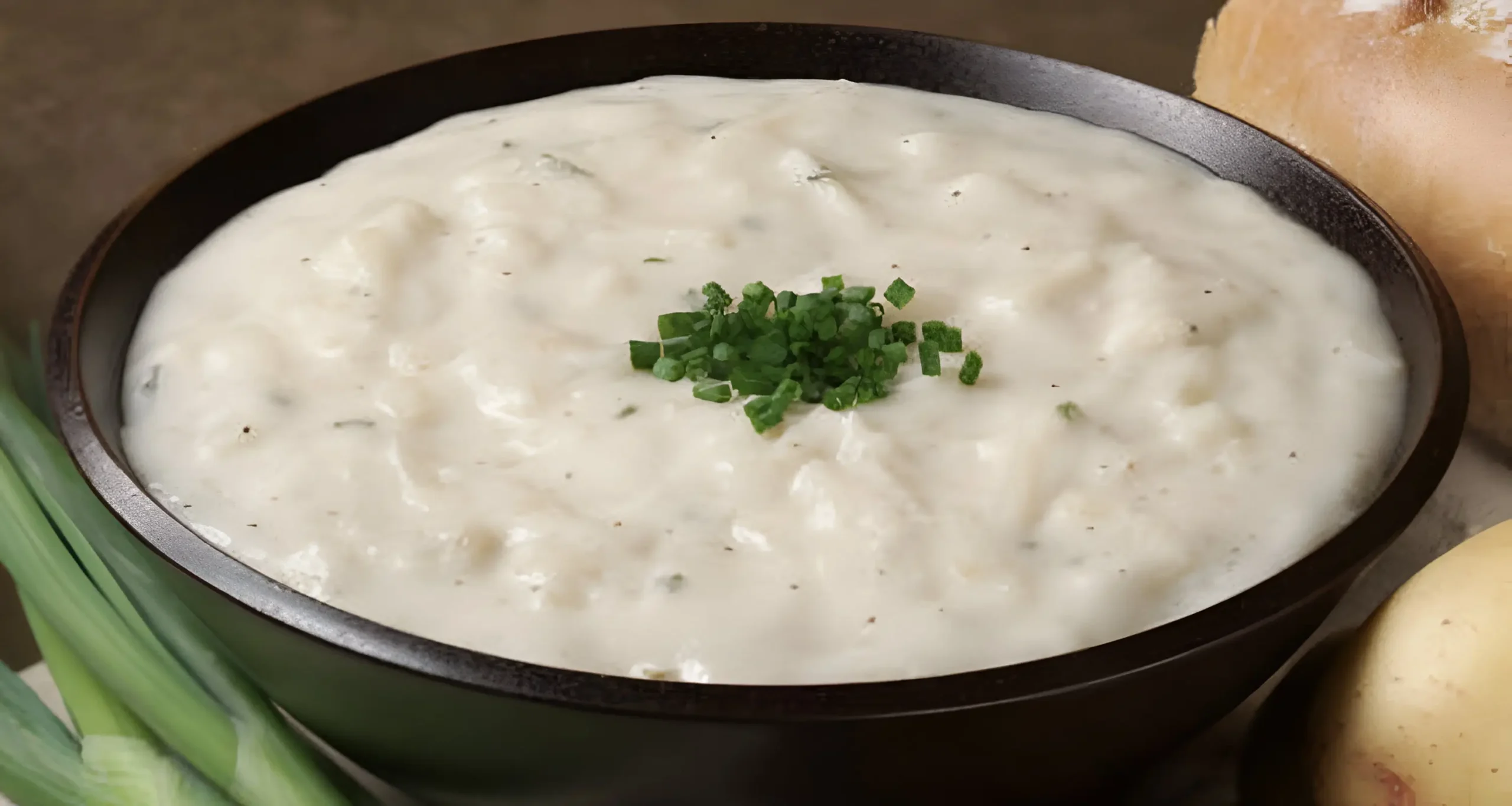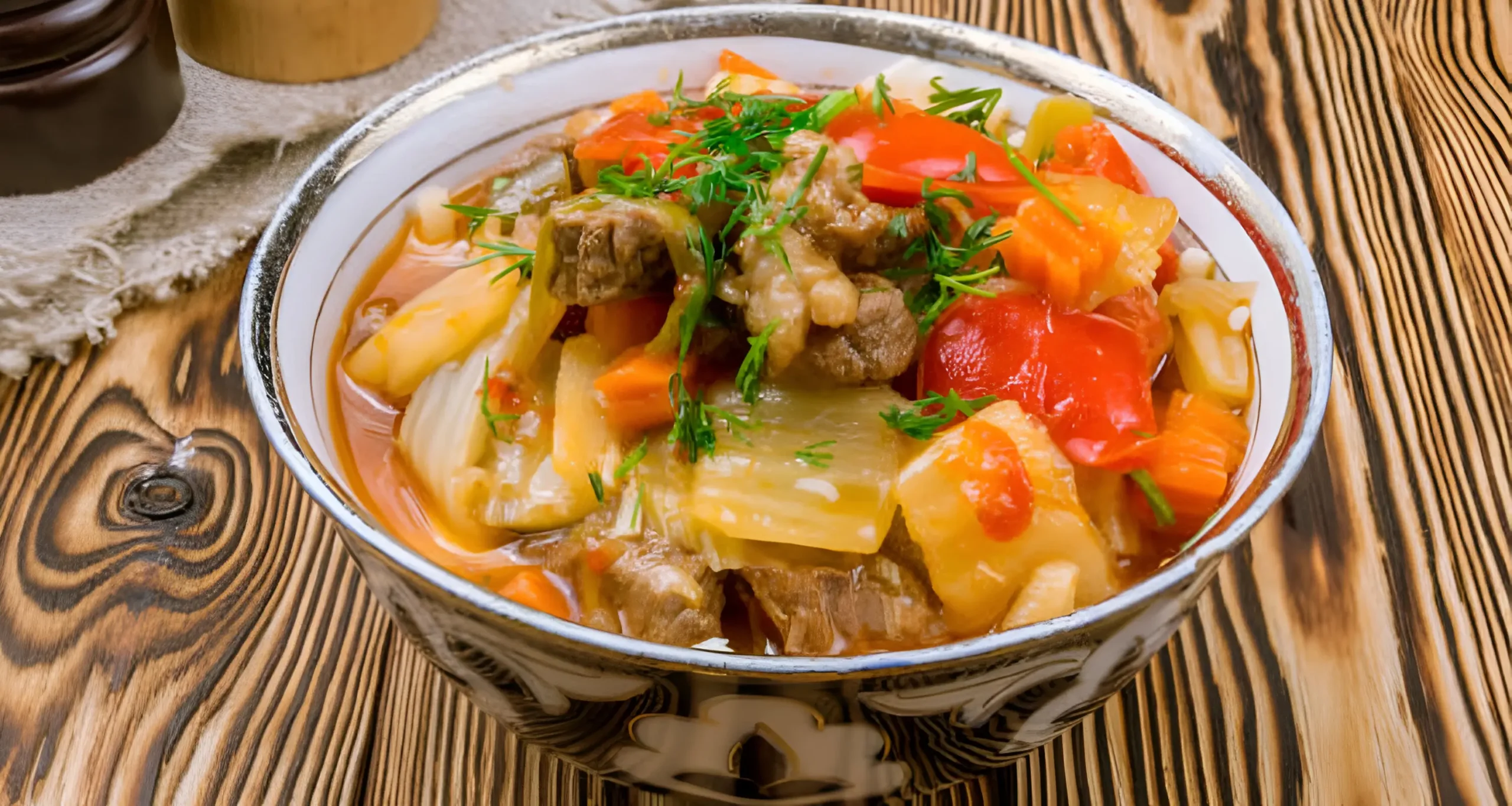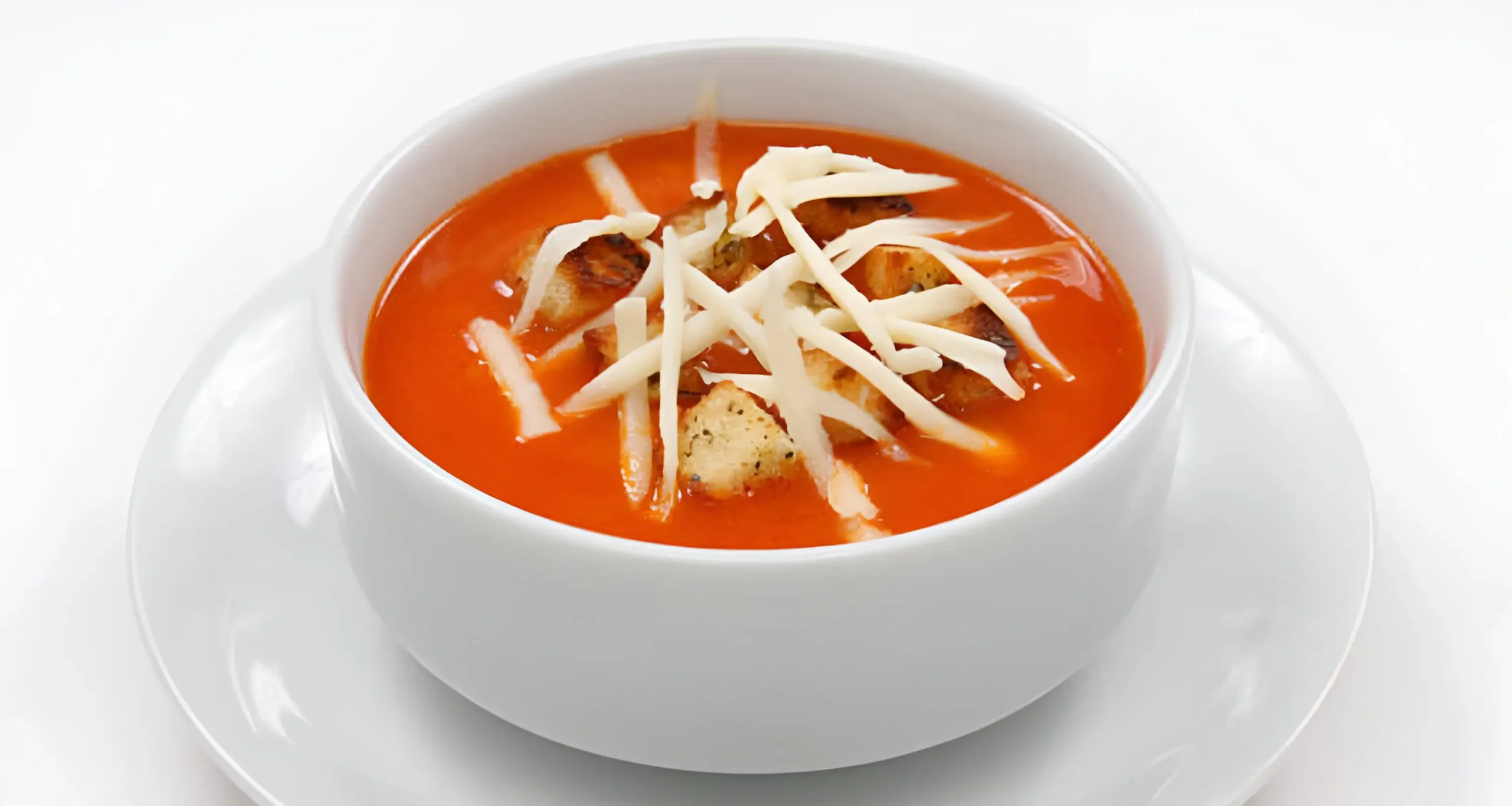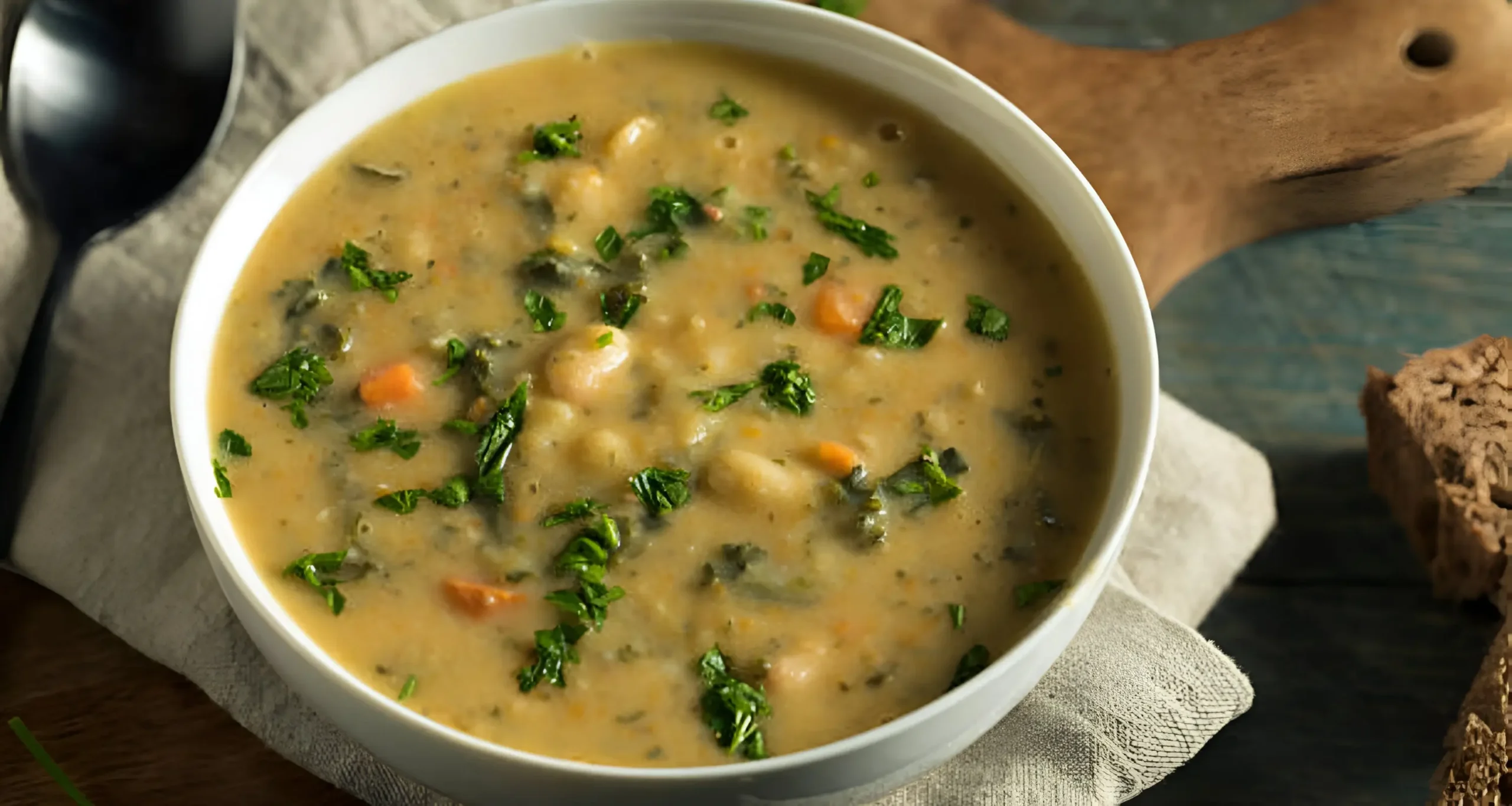Ultimate Gluten Free Soup: A Hearty Bowl of Pure Comfort

Looking for the perfect gluten free soup can change your meal game. It’s great for those with gluten sensitivities or celiac disease. These soups bring warmth, nutrition, and amazing flavors without the gluten.
Gluten free soups have grown from simple recipes to gourmet delights. You can enjoy creamy potato soups or rich vegetable blends. They’re all delicious and keep your health in mind.
Starting your gluten free soup journey is exciting. You’ll find everything from creamy broths to hearty stews. These soups show that you can enjoy great taste without gluten.
Key Takeaways
- Gluten free soups offer delicious alternatives for those with dietary restrictions
- Variety of soup styles can be adapted to gluten free requirements
- Nutrition and flavor remain key in gluten free soup making
- Home cooking lets you choose your ingredients
- Diverse international soup traditions can be easily modified
Understanding Gluten Free Soup Essentials
Making tasty gluten free soups starts with picking the right ingredients and knowing how to prepare them. You’ll learn what to avoid and how to make dishes that everyone can love.
Common Gluten Sources in Traditional Soups
Many classic soups have hidden gluten that can upset some people’s stomachs. Common gluten sources include:
- Wheat-based flour thickeners
- Commercial soup stocks with wheat derivatives
- Pasta or noodle ingredients
- Processed croutons or crackers
Benefits of Going Gluten Free in Soups
Choosing gluten free soups can be very beneficial. It helps those with celiac disease or gluten sensitivity digest better, feel less inflamed, and absorb more nutrients. Your body will thank you for making mindful ingredient choices.
Essential Kitchen Tools for Soup Making
Having the right kitchen tools makes making gluten free soups easier and more fun. Here are some must-haves:
- High-quality blender or immersion blender
- Sturdy stock pot
- Precise measuring cups
- Fine-mesh strainer
- Gluten-free labeled cutting boards
Knowing these basics will help you make delicious, safe, and healthy meals for everyone.
Safe Ingredients for Your Gluten Free Soup Base
Making a tasty gluten free soup begins with picking the right ingredients. Knowing which ones are safe can make cooking easier and ensure a safe meal for those with gluten issues.
When making gluten free soups, focus on using ingredients that don’t have gluten. These ingredients are the base of a healthy and tasty soup that everyone can enjoy.
Essential Safe Ingredients
- Bone broths (chicken, beef, vegetable)
- Homemade stock with fresh vegetables
- Pure vegetable purees
- Coconut milk
- Water-based liquid foundations
It’s important to read labels when picking ingredients for gluten free soups. Some products might have hidden gluten. Look for gluten-free labels or certifications to be sure.
Recommended Gluten Free Soup Bases
| Base Type | Gluten Status | Flavor Profile |
|---|---|---|
| Chicken Bone Broth | Naturally Gluten Free | Rich, Savory |
| Vegetable Stock | Gluten Free | Light, Fresh |
| Coconut Milk | Gluten Free | Creamy, Tropical |
For those making gluten free soups at home, knowing about ingredient safety is key. By choosing pure, unprocessed ingredients and checking they’re gluten-free, you can make delicious soups for all.
Pro Tip: Always double-check ingredient labels and when in doubt, contact the manufacturer directly about gluten content.
Master Guide to Gluten Free Thickeners
Making the perfect gluten free soup recipe means knowing how to get the right consistency. The texture of your soup can make or break the meal. So, it’s key to master gluten free thickening techniques for tasty soups.
Thickening your soup doesn’t have to be hard if you know the right methods. Let’s look at some great ways to make rich, hearty soups that everyone can enjoy.
Natural Thickening Agents
Nature has amazing options for thickening soups without gluten. Here are some powerful natural thickeners:
- Pureed vegetables like potatoes, squash, and cauliflower
- Mashed beans or legumes
- Blended root vegetables
- Coconut cream
Gluten Free Flour Alternatives
If you prefer a more traditional thickening method, gluten free flour alternatives are great. They help make amazing gluten free soup recipes:
- Cornstarch
- Arrowroot powder
- Rice flour
- Potato starch
- Tapioca flour
Proper Thickening Techniques
Getting the perfect soup consistency takes skill. Pro tip: Mix your thickening agent with cold liquid before adding it to hot soup. This avoids lumps and gives a smooth, creamy texture.
The secret to great soup is patience and technique!
Some important techniques include whisking in your thickener slowly, letting the soup simmer gently, and stirring often. This prevents sticking or burning.
Classic Gluten Free Chicken Noodle Soup Recipe
you long for a warm, comforting gluten free chicken noodle soup? You’ve found the perfect spot! This recipe will make your heart feel cozy and your taste buds happy, all without any gluten worries.
To make the best gluten free chicken noodle soup, pick the right ingredients. You’ll need:
- Organic chicken breasts
- Gluten-free rice noodles
- Fresh vegetables
- Homemade chicken broth
When cooking, the right ingredients are key. Start by choosing gluten-free certified items to avoid any gluten mix-ups.
| Ingredient | Quantity | Notes |
|---|---|---|
| Chicken Breasts | 2 lbs | Boneless, skinless |
| Rice Noodles | 8 oz | Gluten-free certified |
| Chicken Broth | 6 cups | Gluten-free verified |
| Carrots | 2 cups | Diced |
| Celery | 1 cup | Chopped |
Here are some important tips for your gluten free soup:
- Always check labels for gluten-free certification
- Use separate cutting boards for gluten-free ingredients
- Rinse noodles thoroughly before adding to soup
Pro tip: Homemade chicken broth makes your soup go from good to amazing!
By sticking to these tips, you’ll make a meal that’s not only delicious but also safe for everyone, no matter their dietary needs.
Creamy Gluten and Dairy Free Soup Options
Finding gluten free soups can be tough, but it’s getting easier. Now, you can make delicious, creamy soups without gluten or dairy. There are new ways to add flavor and nutrition to your meals.
Creating creamy gluten free soups opens up a world of possibilities. You’ll find dairy alternatives that make your favorite soups safe and tasty. These options not only fit dietary needs but also add exciting flavors and textures.
Dairy Alternatives for Creamy Soups
- Coconut milk: Creates a silky smooth base with subtle sweetness
- Cashew cream: Provides rich, neutral flavor perfect for various soup styles
- Almond milk: Offers light, delicate creaminess
- Nutritional yeast: Adds cheesy flavor without dairy
Top Creamy Soup Variations
| Soup Type | Key Ingredients | Dairy-Free Cream Base |
|---|---|---|
| Butternut Squash | Roasted squash, onions, garlic | Coconut milk |
| Mushroom Bisque | Mixed mushrooms, herbs | Cashew cream |
| Tomato Basil | Fresh tomatoes, basil leaves | Almond milk |
Your gluten free soups can be just as rich and comforting as the old favorites. Try these dairy alternatives to make creamy, comforting meals for everyone. No matter the dietary needs, you can enjoy a delicious soup.
Pro tip: Always check ingredient labels to ensure complete gluten-free status when preparing your soup.
Hearty Gluten Free Potato Soup Guide
Making a tasty gluten free potato soup is easy. It’s a great meal for those who can’t eat gluten. Potatoes are naturally gluten-free, making them perfect for a soup that’s good for everyone.
Choosing the right potatoes is key. Use starchy types like Russet or Yukon Gold for a creamy soup. They make the soup thick without using gluten.
- Choose fresh, firm potatoes without green spots or sprouts
- Wash and peel potatoes before chopping
- Dice potatoes into uniform chunks for even cooking
To keep your soup safe for those with gluten issues, check all ingredients. Some soup additives, like bouillon cubes, might have hidden gluten.
Here are some great ways to flavor your gluten free potato soup:
- Loaded Baked Potato Soup: Top with crispy bacon bits, chives, and dairy-free cheese
- Potato Leek Soup: Add sautéed leeks for a rich, elegant flavor
- Spicy Southwest Style: Incorporate roasted green chilies and cumin
Try different herbs and spices to make your soup special. Fresh thyme, rosemary, or smoked paprika can add amazing flavors.
Seasonal Vegetable Soup Combinations
Creating delicious gluten free soups that capture the essence of each season can transform your cooking experience. By selecting the freshest local produce, you can craft gluten free soup recipes that not only tantalize your taste buds but also celebrate the unique flavors of different times of the year.
Understanding seasonal produce helps you design nutritious and flavorful gluten free soups that highlight nature’s bounty throughout the year.
Spring and Summer Soup Inspirations
Warmer months invite lighter, vibrant gluten free soup recipes that showcase fresh, crisp vegetables. Consider these delightful options:
- Chilled gazpacho with ripe tomatoes and cucumber
- Green pea and mint soup
- Zucchini and basil purée
- Asparagus and herb blended soup
Fall and Winter Hearty Varieties
Cooler seasons call for robust, warming gluten free soups that provide comfort and nourishment. Explore these satisfying recipes:
- Roasted butternut squash soup
- Creamy pumpkin with sage
- Root vegetable medley
- Hearty mushroom and potato soup
Each seasonal soup offers unique nutritional benefits and can be easily adapted to meet gluten free dietary requirements. Experiment with local, fresh ingredients to create memorable meals that celebrate the flavors of each season.
Quick and Easy Gluten Free Soup Recipes

Looking for tasty gluten free soups that won’t take all night? You’re in luck! These quick and easy gluten free soup options will make your weeknight meals exciting. You won’t need to spend hours cooking.
Busy cooks can easily make gluten free soups. The trick is to pick ingredients that are naturally gluten-free. They should also be quick to prepare.
- 15-Minute Vegetable Medley Soup
- Instant Chicken Zoodle Soup
- Hearty Black Bean Soup
- Creamy Butternut Squash Soup
Each of these gluten free soup recipes can be made in 30 minutes or less. They show how simple ingredients can make healthy meals. You don’t need complicated cooking methods.
“Great soup doesn’t need to be complicated – it needs to be flavorful!” – Professional Chef
Here are some tips for quick gluten free soup making:
- Use pre-chopped vegetables
- Keep gluten-free broth stocked
- Utilize frozen vegetable mixes
- Invest in quality gluten-free seasonings
Your gluten free soup journey starts now. It requires minimal time and offers maximum flavor!
Storing and Freezing Your Gluten Free Soups
Preparing gluten free soups ahead of time saves you time. It ensures you always have a tasty meal ready. It’s important to store them right to keep them fresh and safe.
Choosing the right containers and techniques is key. This helps keep your soup’s flavor, texture, and nutrients intact.
Selecting the Perfect Storage Containers
When storing gluten free soups, pick containers that fit certain criteria:
- Use airtight glass or BPA-free plastic containers
- Select containers with tight-sealing lids
- Choose containers in portion-friendly sizes
- Opt for freezer-safe materials
Freezing and Thawing Techniques
Freezing gluten free soups needs some planning. Not all soups freeze the same, so here are some tips:
- Cool soup completely before storing
- Leave space at the top of the container for expansion
- Label containers with date and soup type
- Use frozen soups within 2-3 months for best quality
To thaw your soup, put it in the fridge overnight. Reheat it slowly on the stovetop, stirring often. Cream-based and potato soups might need more liquid to reheat properly.
Pro tip: Freezing soups in individual portions makes for quick, gluten-free meals.
Common Mistakes to Avoid in Gluten Free Soup Making
Making gluten free soup can be challenging. Many people make mistakes that affect the taste and safety of their soups. Knowing these common errors will help you make safe and tasty meals every time.
When making gluten free soup, avoiding cross-contamination is key. Here are some mistakes to watch out for:
- Using wooden utensils that may harbor gluten residue
- Failing to check ingredient labels carefully
- Overlooking possible gluten sources in stock cubes
- Neglecting to clean cooking surfaces thoroughly
Kitchen surfaces and tools can secretly introduce gluten into your meals. Always use separate cutting boards and wash utensils meticulously when preparing gluten free soup recipes. Having dedicated gluten-free cooking tools helps prevent contamination.
“Prevention is better than cure – in gluten-free cooking!” – Gluten-Free Chef Experts
Texture issues can be a problem for home cooks making gluten free soups. Using the right thickeners like cornstarch or arrowroot can greatly improve your soup’s texture. Try different gluten free alternatives to find the best thickening method for you.
Being careful with ingredients is essential. Always read labels, research hidden gluten sources, and contact manufacturers if unsure. Your health and cooking success depend on these steps.
International Gluten Free Soup Inspirations
Exploring global cuisine opens up a world of delicious gluten free soup options. These soups tantalize your taste buds while keeping your diet safe and exciting. Traveling through different culinary traditions shows how diverse and flavorful gluten free soups can be.
Discovering international gluten free soups lets you expand your cooking repertoire. You can enjoy global flavors without worry. Each region offers unique approaches to creating hearty, satisfying gluten free soups that are both nutritious and delightful.
Asian-Inspired Gluten Free Soup Solutions
Asian cuisine provides remarkable gluten free soup options that burst with complex flavors. Consider these exciting choices:
- Tom Yum soup with fresh herbs and seafood
- Miso-based broths with vegetable variations
- Clear rice noodle soups without wheat ingredients
Mediterranean Gluten Free Soup Favorites
Mediterranean regions offer light yet robust gluten free soup recipes. These recipes celebrate fresh ingredients. Your culinary journey might include:
- Gazpacho – A refreshing cold soup perfect for summer
- Minestrone made with rice or corn-based pasta
- Lentil soups packed with aromatic spices
Latin American Gluten Free Soup Classics
Latin American cuisine presents robust gluten free soup traditions. These traditions warm both body and soul. Explore these delectable options:
- Pozole with corn-based ingredients
- Black bean soup with vibrant seasonings
- Chicken soup variations using corn tortillas
Your international gluten free soup adventure proves that dietary restrictions never mean sacrificing flavor or excitement in your meals.
Nutritional Benefits of Homemade Gluten Free Soups

Making homemade gluten free soups is a great way to get more nutrients in your diet. These soups are perfect for adding important nutrients to a single, comforting dish.
By choosing the right ingredients, your gluten free soup can be super nutritious. The main benefits are:
- Rich in essential vitamins and minerals
- High in dietary fiber
- Supports immune system health
- Helps maintain digestive wellness
Gluten free soups let you control the quality of ingredients. Unlike store-bought soups, homemade ones have more nutrients and no bad additives.
Adding protein-rich foods like lean meats, legumes, and quinoa makes your soups complete meals. Vegetables add important nutrients, making your soup balanced and healthy.
“Food is your best medicine when prepared with intention and knowledge.” – Nutritional Wellness Expert
Choosing fresh, whole ingredients for your soups does more than just feed you. It’s a smart way to support your body’s health goals.
- Tip: Rotate ingredients to ensure diverse nutrient intake
- Mix colorful vegetables for maximum nutritional diversity
Tips for Converting Traditional Soup Recipes
Turning your favorite soup recipes into gluten free ones can seem tough. But with the right methods, you can make classic recipes gluten free without losing flavor or texture.
First, find out where gluten might be in your original recipes. Common places include:
- Wheat-based noodles
- Flour-based thickeners
- Premade soup stocks
- Processed meat additives
To convert recipes, you need to swap out ingredients. Gluten free alternatives can seamlessly replace traditional ingredients. Here are some tips for swapping:
- Swap wheat noodles for rice, quinoa, or zucchini noodles
- Use cornstarch or arrowroot instead of wheat flour for thickening
- Make sure broths and stocks are gluten-free
- Choose pure, unprocessed meat and vegetables
Professional chefs say it’s key to read labels and pick certified gluten free products. Your aim is to keep the soup’s true taste while making it safe and tasty for all.
“Cooking gluten free doesn’t mean compromising on flavor – it means being creative and intentional.” – Culinary Expert
Remember, getting better at making gluten free soups takes practice. Try different swaps and listen to your taste buds. They’ll help you create delicious gluten free soups.
Budget-Friendly Gluten Free Soup Ideas
Making tasty gluten free soups doesn’t have to cost a lot. You can find affordable and healthy options by smart shopping and cooking. This way, you can enjoy great-tasting gluten free soups without spending too much.
Starting with the right ingredients is key to making affordable gluten free soups. Your pantry can hold many affordable items. These items can turn simple meals into unforgettable ones.
Cost-Effective Ingredients
Here are some affordable gluten free soup ingredients:
- Dried beans and lentils
- Seasonal root vegetables
- Frozen vegetable blends
- Canned tomatoes
- Chicken or vegetable stock
Bulk Cooking Strategies
Save time and money with bulk cooking for gluten free soups. Make big batches that you can freeze for later. This makes quick meals easy.
- Choose recipes with versatile base ingredients
- Invest in quality storage containers
- Label and date your soup batches
- Use freezer-friendly recipes
By using these tips, you can make delicious gluten free soups that are also budget-friendly. Enjoy!
Time-Saving Preparation Methods
Making tasty gluten free soups doesn’t have to take all night. Smart kitchen tricks can make meal prep fast and easy. With a few simple steps, soup making becomes quick and efficient.
Here are some key ways to save time with your gluten free soups:
- Invest in a multipurpose kitchen appliance like a slow cooker or pressure cooker
- Prep vegetables in advance and store in freezer-safe containers
- Create homemade soup starter kits with pre-measured dry ingredients
- Batch cook gluten free soup recipes and freeze individual portions
Meal planning is key for quick gluten free soup recipes. Dedicate one afternoon each week to preparing base ingredients that can be quickly turned into different soups. This saves time and keeps you ready for healthy meals.
“Preparation is the secret ingredient in every great kitchen.” – Professional Chef
Quick-cooking gluten free grains like quinoa and rice can be pre-cooked and stored. This cuts down soup prep time a lot. Using canned or pre-cooked legumes also makes the process quicker.
By using these smart prep methods, you’ll spend less time cooking. And more time enjoying tasty, healthy meals.
Conclusion
Making tasty gluten free soups is now easy. This guide teaches you how to make healthy, delicious meals. You can enjoy these without worrying about gluten.
Every gluten free soup recipe is a chance to get creative in the kitchen. You can try new ingredients and flavors. It’s all about making healthy choices that taste great.
Start playing with different ingredients and cooking methods. Try making everything from creamy potato soups to light vegetable broths. Remember, it takes practice to get better, so keep trying new things.
Learning to make gluten free soups will change how you cook. You’ll see how simple ingredients can make amazing meals. This guide has given you the tools to make soups that are good for you and your wallet.
But your cooking journey doesn’t stop here. Keep trying new things and enjoying the world of gluten free soups. Each bowl is a chance to take care of your body and please your taste buds. It’s a healthier way to cook for everyone.
FAQ
What makes a soup gluten free?
A gluten-free soup doesn’t have wheat, barley, rye, or other grains with gluten. It uses cornstarch, rice flour, or potato starch to thicken. Also, all broth, seasonings, and add-ins must be gluten-free.
How can I thicken my gluten-free soup without wheat flour?
There are many ways to thicken soups without gluten. You can use pureed veggies, cornstarch, arrowroot powder, rice flour, or potato starch. These options keep the soup smooth and rich.
Are canned soups typically gluten free?
Not always. Many canned soups have gluten from wheat-based thickeners. Always check labels for gluten-free products or look for ingredients that might contain gluten.
Can I make a creamy soup without dairy and gluten?
Yes! Use coconut milk, cashew cream, almond milk, or pureed veggies for creaminess. These plant-based options add richness without gluten or dairy.
What are some naturally gluten-free soup ingredients?
Many ingredients are naturally gluten-free. This includes veggies, meats, fish, rice, beans, lentils, potato, quinoa, and bone broth. These are great bases for safe and tasty soups.
How do I prevent cross-contamination when making gluten-free soup?
Use separate cutting boards, utensils, and surfaces for gluten-free cooking. Clean all equipment well and avoid wooden utensils that can hold gluten. Store gluten-free ingredients away from gluten-containing products.
What kitchen tools are essential for gluten-free soup making?
Key tools include a good blender for pureeing and separate cutting boards. You’ll also need dedicated gluten-free utensils, accurate measuring cups, and a food thermometer for cooking.
Are all broths and stocks gluten free?
No, some broths have gluten as a thickener or flavoring. Always check labels for gluten-free options. Homemade bone broth or stock is usually the safest choice.
How long can I store homemade gluten-free soup?
Most gluten-free soups can be refrigerated for 3-4 days in an airtight container. For longer storage, freeze for up to 3 months. Cool completely before freezing and use freezer-safe containers.
Can I convert traditional soup recipes to be gluten free?
Yes! Replace wheat flour with cornstarch, rice flour, or potato starch for thickening. Swap regular pasta for gluten-free alternatives. Also, ensure all seasonings and broths are gluten-free certified.
Add a Dash of Your Thoughts!
There are no reviews yet. Be the first one to write one.






